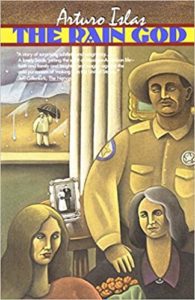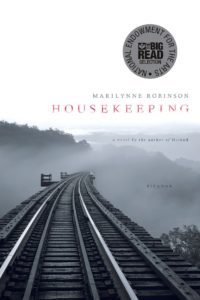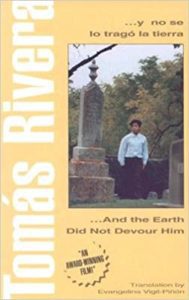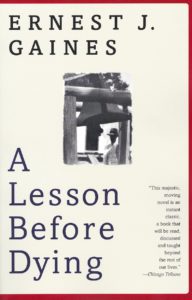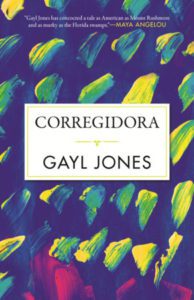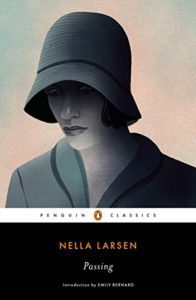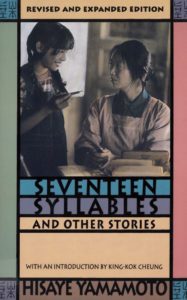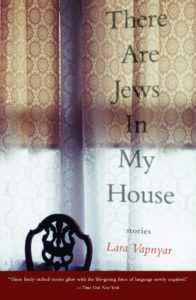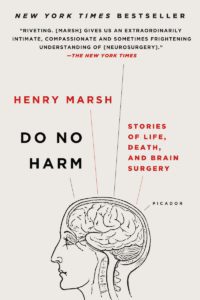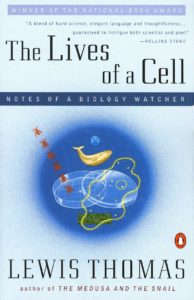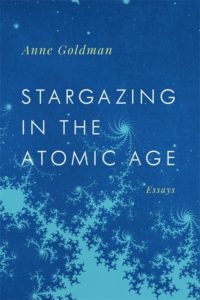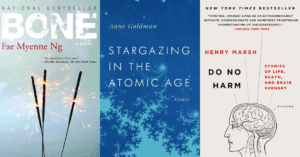
In the middle of political, medical, and meteorological upheavals, I’ve been longing for writerly voices conducive to reflection—books that are quicker to summon compassion than to provoke fear. To my mind, the titles below offer a wider sense of the world we look out at from the windows of rooms we long to leave. Their tones of voice came to me practically unsummoned, as do people so familiar you don’t need to identify a distinguishing feature—the bridge of a nose, a placid smile, the faint blue circles under a pair of eyes—to feel they are close by. This kind of writing gets under the skin not because it demands to be looked at but because its observations feel more like memory than something outside the self. This is writing that does not clamor for attention but whose sentences follow each other with the sureness of migrating birds.
The prose works listed below range from novel to story to essays whose lyricism veers close to poetry. Taken together, they range across the visible world, the internal landscapes of human feeling, and places few of us get to perceive—the folds of matter a brain surgeon navigates with a laser and the landscapes of tissue a physician-scientist observes through a microscope. These books scrutinize as many distinct materials as there are shapes of rocks in a stream. They assemble language that looks as different as peacocks flourishing tailfeathers seem from beetles hiding under blades of grass. As a whole, these books sing or speak sotto voce rather than shouting or shaking their fists. Their quiet pitches mean you have to come close to listen rather than eye them idly from screens. Because they refuse obvious acrobatics, they ask us to listen with our full concentration. In doing so, they offer us the respect of assuming we are as capable of openness and curiosity as are they, whether they are exposing the bafflement of a child waiting too long to be comforted or describing the brilliance with which plants turn sunlight into sugar. What they resist is complacence. In the end, what they all share is an agreement not to distract their readers but to beckon them to walk out into our environment without hesitation.
***
The Rain God by Arturo Islas
Islas’s elegant and evocative novel is quietly spectacular in its probing of human nature. The heart of the book is the Tejano family at its center, who readers first perceive through the eyes of its black sheep son (a professor, like the author himself) who looks east toward his native El Paso landscape from the (still) rainier world of San Francisco. Ultimately, we are able to observe the relationships between characters in this extended grouping from a wide range of perspectives. The tenderness with which Islas exposes his characters in all of their frailties and conflicted desires is equaled only by his extraordinary ability to withhold judgement. His subtle artistry allows readers to try to work toward doing the same. The sentences are lucent as water and tactile in their evocations as the dry earth of the desert.
Housekeeping by Marilynne Robinson
“My name is Ruth,” begins Marilynne Robinson’s first novel. But if the book begins by calling up Moby Dick, it takes its own way with a sure-footedness that allows the writer to navigate the diverging paths two sisters take after they are orphaned. Like Islas, Robinson structures her novel, largely speaking, via the four classical elements. But water is uppermost in Housekeeping, whether conjured in the lake into which a train slides “like a weasel sliding off a rock,” or in the frost light coaxes into “flowering.” This is a book that refuses partings even as it lingers on the divides death creates. Its sentences are as close to music as are any I have read. If the book takes on the sweep of millennial time, its adagio pace suspends time as you read. I have read this book many times and still it remains as beautiful and mysterious as a dream.
And the Earth Did Not Devour Him / … y no se lo tragó la tierra by Tomás Rivera
The bilingual edition of Rivera’s 1971 novel, a book engendered in part by the Chicano Movimiento but which speaks as urgently to our own moment, is a narrative of witness that is modernist in structure and reaches all the way back to Chaucer in its evocation of pilgrimage. Its distinct voices reflect upon the struggles and violence inflicted upon migrant farmworkers. But the book is ultimately more interested in honoring interiority. It provides a range of different responses to privation. Spare, clear-eyed, and emotionally unflinching, it refuses to reduce its characters to a mass or type. Structurally, it is a tour de force, a set of soliloquies, each followed by small and brilliant parables. Underestimated in terms of its formal innovations, this novel’s approach to people who are often massed at a distance in the documentarian’s lens is unequalled in the specificity with which it draws out and orchestrates the separate aspirations of its characters. Rivera, himself the child of migrant workers, became the first Mexican American to work as Chancellor at a University of California campus.
A Lesson Before Dying by Ernest J. Gaines
I have read Ernest Gaines’s Pulitzer-prize winning novel only once, years ago, but I can still hear the music it made in my inner ear. It is a book that steadies its story through spare, deliberate sentences whose plainness is as well-wrought as Quaker furniture. Its minimalism is enlarged and deepened through its patterns of repetitions. The novel approaches a story recently retold in Bryan Stevenson’s memoir Just Mercy; that is, the unjust and deliberate framing of a Black man for a crime he did not commit. But this narrative holds steadily to a single relationship: that between the young field worker sentenced to death by electrocution and the teacher who takes up vigil with him. Initially reluctant, Gaines’s narrator finds the means not only to dignify and shore up another but to offer himself the same acknowledgment. “I was not there, yet I was there,” the novel begins, calling its readers to account as well.
Bone by Fae Myenne Ng
In Bone, Fae Myenne Ng looks at what language reveals about people in place—and more specifically, about the ways language offer traces of the ruptures, the losses, and the difficulties of translating the self from one place to another. The US turned hard eyes upon the Chinese who came to its shores to build the Transcontinental Railway, and a grim line of the mouth upon their descendants. Language shores up the memory of these difficult feelings, Ng’s work suggests. “I have a whole different vocabulary of feeling in English than in Chinese, and not everything can be translated,” the narrator of Bone tells us early on in the novel. Few writers have borne witness to history so artfully. Ng writes sentences as carefully as poets shape lines. Or rather, writes words with precision—for words beaded together like dew on grass create the cadences that make lines sound in the ear long after the eye has brushed past them to other sentences. In the end, I don’t have the right expressions to explain fully the effect Fae’s writing has on me, but years after my first reading of Bone, I still feel the pulse and sea-surge underlying the feeling lives of its characters, as if it’s in my blood.
Corregidora by Gayl Jones
This is a bluesy, bruising, excoriating, transformative novel, a cry of pain that shapes itself into a story of self-making rivetingly framed through the singular voice of its first-person narrator. Ursa is a singer who fights for the right to make art in her own image. Through this character, Jones explores the crippling weight of history a nation willfully amnesiac about the devastations of slavery continues to impose upon Black life in the present. Like Toni Morrison, who championed this book while an editor at Random House, Jones explores the ways love—for the self, for another, for the right to create—survives despite history’s bitter bequest. Refusing to be bowed and bludgeoned by a husband who falters in the face of this corrosive legacy and a grandmother who calls upon her granddaughter to remain a vessel of witness, Ursa looks her life directly in the face and demands terms that will allow for self-making. By turns, bleak, raw, and beautiful, this book, like its heroine, finds a way, still, to insist upon desire in the largest sense of the word.
Passing by Nella Larsen
Readers who enjoyed Brit Bennett’s The Vanishing Half will almost certainly be gripped by Nella Larsen’s taut, slender novel, Passing, first published during the Harlem Renaissance. Like Bennet, Larsen pairs her characters and trains our attention on their relation. But Passing is really a study of one particular couple—the cord that binds Clare Kendry and Irene Redfield, friends in childhood who a chance circumstance throws together as adults. Both are married to men, but one of the novel’s pleasures for me is that it makes no apology for putting husbands in the backseat and foregrounding the far more potent connection between women. The intensity of this relationship, and the way its ferociousness gestures toward the very high stakes involved with passing of different kinds, is something I’ll never forget. Though the book’s sentences move through Irene’s memory, the tension they establish through the musings of this character drives fiercely toward conclusion. The reflective quality of the novel feels like a shining surface, but the writer exposes all the heat and anger and yearning underneath. The novel’s startling close leaves me with a percussive shock no matter how many times I reread it.
Seventeen Syllables and Other Stories by Hisaye Yamamoto
I go to Yamamoto’s story collection whenever I need to remind myself how best to work with the limited perspective of the child in fiction. I have moved many times since I bought these stories and confess to having sold back books, in my student days, in order to purchase new titles. But Seventeen Syllables has never left my shelves, though the shelves themselves have been carted from state to state. The title story is a virtuous performance. Yamamoto gestures toward gaps—the often unspoken bafflement between immigrant parents and their sons and daughters born in the US. There is no single-minded pursuit; instead, a fine network of filiations and affections, however fraught. Misunderstandings between parent and child, rifts within marriages, deeply felt but unspoken conflicts between employer and laborer: all are set within finely painted rural California landscapes.
There Are Jews in My House by Lara Vapnyar
Like Seventeen Syllables, Vapnyar’s debut collection offers readers insights into the connections across continents divided by seas. The title story foregrounds two women and their daughters. Here, it is the relationship between mothers that is mostly at issue and which is worked through a child’s toy, feelingly described and which becomes an uncanny object in this fiction. This is a story that whispers out of necessity, one that takes place during WWII. A Russian woman takes in her Jewish friend and daughter during the German occupation. The terror is tamped down but unmistakable. Vapnyar, a relatively recent immigrant to the US, writes as beautifully of Brooklyn as she does of Moscow. The chasm between respective cultures is a deep one in these stories, but her young narrators hop over it with surprising nimbleness.
Do No Harm: Stories of Life, Death, and Brain Surgery by Henry Marsh
Never has a book seemed so of our moment to me than Henry Marsh’s essay collection, Do No Harm. Just as chemist and writer Primo Levi’s memoir The Periodic Table is structured around the elements (and which wraps up with the virtuosic essay, “Carbon,” bringing all life-forms close), Marsh coordinates his leaps from the contents of the brain to the thoughts it makes possible with titles that name different kinds of tumors. I had only to open the book to feel the foreign Latin terms become familiar. “Pineocytoma” starts like this: “I often have to cut into the brain and it is something I hate doing.” For me, there is humility alongside hubris in this self-portrait, but it is humility that wins out in the collection as the essays disclose as many confessions of error as of expertise. In its pages, twenty-first-century ideas about neurochemistry are somehow soldiered to far earlier understandings of the soul, of contemplation, and of dream.
The Lives of a Cell: Notes of a Biology Watcher by Lewis Thomas
Thomas uses art to make science known to us. His thinking is capacious and inclusive. Maybe because he was both a physician and an essayist, he is accustomed to seeing across and between. Here is Thomas on viruses, decades before the one with which the world is now grappling: “We live in a dancing matrix of viruses; they dart, rather like bees, from organism to organism, from plant to insect to mammal to me and back again…” Thomas zooms from microscopic to galactic in the space of a sentence and with a competence and quiet that makes the trip seem easy. The first essay approaches our environment in its largest sense—our planet—and from more angles than the objects in a Picasso painting have edges. “I have been trying to think of the Earth as a kind of organism,” Thomas writes. Just as quickly, he decides that this metaphor won’t work. The essay ends with a call and response—a question and answer I won’t reveal, but that yokes our globe to one of the smallest units of which we are made. In doing so, Thomas finds a way to return us to ourselves.
And to close out this wonderful list, we just had to include Anne’s debut collection of essays, Stargazing in the Atomic Age, out now from University of Georgia Press! – Ed.
Stargazing in the Atomic Age: Essays by Anne Goldman
During World War II, with apocalypse imminent, a group of well-known Jewish scientists and artists sidestepped despair by challenging themselves to solve some of the most difficult questions posed by our age. Many had just fled Europe. Others were born in the United States to immigrants who had escaped Russia’s pogroms. Alternately celebrated as mavericks and dismissed as eccentrics, they trespassed the boundaries of their own disciplines as the entrance to nations slammed shut behind them. In Stargazing in the Atomic Age, Anne Goldman interweaves personal and intellectual history in exuberant essays that cast new light on these figures and their virtuosic thinking. In lyric, lucent sentences that dance between biography and memoir as they connect innovation in science with achievement in the arts, Goldman yokes the central dramas of the modern age with the brilliant thinking of earlier eras. In these essays, Goldman reminds readers that Jewish history offers as many illustrations of accomplishment as of affliction. At the same time, she gestures toward the ways in which experiments in science and art that defy partisanship can offer us inspiration during a newly divisive era.

